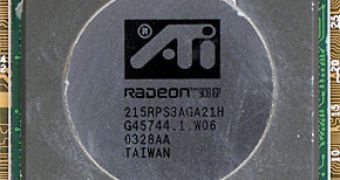Graphics cards can be easily split into two large categories: discrete and integrated into the chipset cards. While until very recently discrete graphics cards were the incontestable kings of performance and efficiency and they were having a field day, now as the mobile computing systems are starting to sell better than desktops, the integrated kind takes the lead, partly because of increases in technology which bring quite enough performance for a casual gamer or home or office use, not to mention that integrated cards are much cheaper.
During the first quarter of the year the entire market for discrete graphics cards took some wrong turns as it declined visibly and only during the second quarter of the year the market began an ascending trend, which according to the market research firm Jon Peddie Research is entirely owned to the apparition of the DirectX 10 compatible cards. The market research firm published some values showing that 21.1 million cards were shipped during the second quarter of the year and they generated a revenue of $5.8 billion which means an average selling price of $274, a definitive increase over the previous periods. As the main graphics processing units, AMD and Nvidia are now focusing less on very high end and expensive cards and more on consumer oriented ones with a number of products that are addressed to the mainstream market like the Nvidia made low cost 8600, 8500 and 8400 graphics chips. On the other hand AMD's graphics division, ATI, came up with the Radeon HD 2600 and 2400 series of GPUs, which are now available at lower price points as well mainly because of efforts to popularize the entire line of R600 technology.
Advanced Micro Devices started shipping its low end discrete and integrated graphics processing units from the Radeon 2000 family in late June so most of the DirectX 10 compatible market is already taken by Nvidia which has according to report posted by another market tracking firm Mercury Research, almost 75 percent of the whole market. The news site xbitlabs cites the JPR research firm in saying that in the near future integrated graphics solutions will continue to pressure the discrete cards market. The integrated graphics processors or IGPs for short raised Intel's status on the graphics market, allowing it to take a big bite from a previously almost impregnable market. This situation appeared because of the Intel mobile computing platform which includes beside a processor and a chipset, an integrated graphics unit and a wireless network card too. As 2008 approaches, the discrete graphics cards market may face yet another threat as AMD officially announced its intention to unite the GPU and the CPU under a single architecture which will be known as Fusion.

 14 DAY TRIAL //
14 DAY TRIAL //